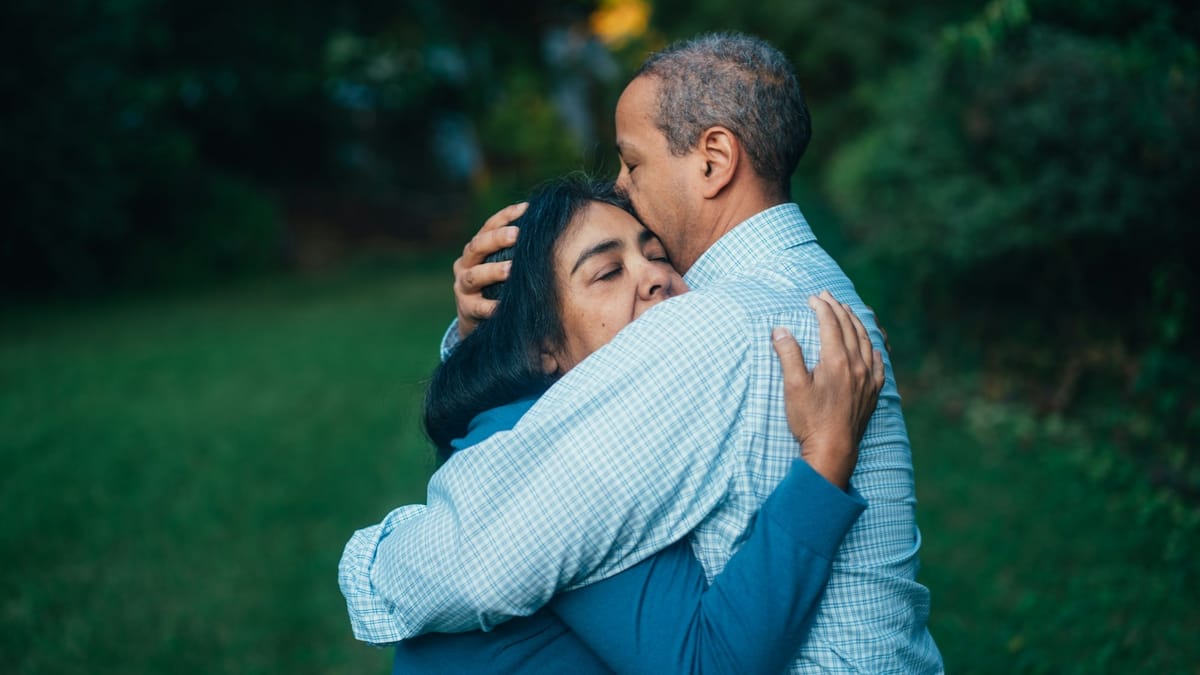Beyond the Diagnosis: A Guide to Cancer Types, Symptoms, and Support
Did you know cancer claims nearly 10 million lives each year? Understanding how it starts, spreads, and can be treated is more important than ever. In this post, we’ll explore what you need to know—and why it truly matters.

Did you know that nearly 1 in 2 people will be diagnosed with some form of cancer during their lifetime? Understanding this disease isn’t optional, it’s essential.
Cancer is not a single disease but a complex group of conditions marked by abnormal cell growth that can spread throughout the body. Despite decades of research, it remains one of the leading causes of death worldwide. Understanding how cancer develops, the various types it can take, and the risk factors involved is essential for early detection and effective treatment.
Each form of cancer, whether breast, lung, or skin, presents unique symptoms, challenges, and treatment pathways. In this article, we’ll explore the foundations of cancer biology, highlight the signs to watch for, and provide insight into the most common types affecting people today. Just as importantly, we’ll discuss the emotional and psychological journey many patients face and the importance of support systems. By raising awareness and sharing knowledge, we empower individuals to make informed decisions and promote a proactive approach to health.
What Is Cancer, Really?
Understanding Its Cellular Roots and Varied Faces
Cancer begins in the body’s most basic building blocks, its cells. Under normal circumstances, cells grow, divide, and die in a controlled, orderly way. But when this process goes awry, cells may begin to grow uncontrollably and refuse to die when they should. This uncontrolled cell division leads to the formation of tumors (in most cancers) or the accumulation of abnormal cells in the blood (as in leukemia).
At the heart of cancer's development are genetic mutations, changes in the DNA that controls how cells function. Some of these mutations are inherited, passed down through families. Others occur during a person’s lifetime due to environmental exposures (like smoking or radiation), lifestyle factors, or simply as a result of aging. These mutations may activate oncogenes (genes that promote cell growth) or deactivate tumor suppressor genes (genes that normally slow down division or trigger cell death), tipping the balance toward malignancy. But cancer isn’t just one disease, it’s many.
There are more than 100 different types of cancer, each with its own origin, behavior, risk factors, and treatment options. For example, breast cancer behaves very differently from pancreatic cancer, not only in terms of symptoms and prognosis, but also in how it responds to therapies. That’s why understanding the specific type of cancer someone has is critical for creating an effective treatment plan.
This diversity also explains why a one-size-fits-all approach to cancer care doesn’t work. Advances in science have shown that even within the same type of cancer, there can be multiple subtypes based on molecular characteristics. Today, doctors increasingly rely on genetic testing to personalize treatment, choosing therapies that target specific mutations or pathways unique to each patient’s cancer.
By grasping how cancer develops at the cellular level and recognizing the vast array of cancer types, we lay the foundation for better prevention, diagnosis, and treatment. Awareness isn’t just about knowing the word "cancer", it’s about understanding what it means, how it behaves, and how science is working every day to outsmart it.
Spotlight on Cancer
Key Types, Warning Signs, and What You Need to Know
Cancer isn’t a single disease, it’s a wide-ranging family of illnesses that affect different parts of the body in different ways. Let’s explore some of the most prevalent cancer types, their characteristics, and how they can be detected and treated.
- Breast cancer is one of the most common cancers among women worldwide. Risk factors include age, family history, hormonal influences, and lifestyle choices. Early signs can include a lump in the breast, changes in size or shape, or nipple discharge. Mammograms, self-exams, and awareness are crucial for early detection. Treatments range from surgery and radiation to hormone therapy and targeted drugs.
- Colorectal cancer affects the colon or rectum and is often linked to diet, genetics, or chronic conditions like inflammatory bowel disease. Symptoms may include blood in the stool, persistent abdominal pain, or changes in bowel habits. Regular screening through colonoscopies can detect precancerous growths early, improving outcomes significantly.
- Lung cancer is the leading cause of cancer-related deaths, with smoking as its primary risk factor. Symptoms often include a persistent cough, chest pain, or coughing up blood. Low-dose CT scans are useful for early detection in high-risk individuals. Treatments include surgery, chemotherapy, radiation, and immunotherapy.
- Prostate cancer is common in older men. It may cause urinary difficulties, blood in urine, or pelvic discomfort, though many cases remain asymptomatic in early stages. Risk factors include age, ethnicity, and genetics. Management may involve active surveillance, surgery, or hormone therapy.
- Pancreatic cancer is known for its silent progression and poor prognosis. Symptoms, such as jaundice, weight loss, or back pain, often appear late. It’s aggressive and difficult to detect early, though advances in genetic testing and imaging are improving diagnostic tools.
- Skin cancer, including melanoma, basal cell carcinoma, and squamous cell carcinoma, often begins with changes in the skin’s appearance. Prevention through sun protection and regular skin checks is key. Early-stage skin cancers are often curable with minor surgery.
- Cervical cancer is closely tied to HPV infection. Pap smears and HPV tests are vital for early detection, and vaccines can prevent many cases.
- Ovarian cancer often presents with vague symptoms like bloating and pelvic discomfort. Early diagnosis is challenging but critical.
- Stomach cancer may cause indigestion, nausea, or weight loss. Helicobacter pylori infection and family history increase risk.
Silent Signals
Common Symptoms and Hidden Risk Factors of Cancer
Cancer often develops quietly, with early symptoms that are easy to overlook or misinterpret. Recognizing these warning signs, shared across many types of cancer, can be life-saving. Among the most common are persistent fatigue, unexplained weight loss, and skin changes such as unusual moles, jaundice, or itching. These symptoms may seem minor or vague, but they can be early indicators of serious underlying disease.
Fatigue in cancer is different from normal tiredness, it’s often intense and doesn’t improve with rest. Sudden weight loss, particularly when not associated with dietary or activity changes, may signal metabolic changes linked to tumors. Skin symptoms, though commonly dismissed, can reveal cancers of the skin, liver, or pancreas. Other generalized signs include fever, pain, and unexplained bleeding. Recognizing and acting on these cues early significantly increases the chances of successful treatment.
Knowing when to seek professional care is vital. Any persistent or worsening symptom, especially when it lacks a clear cause, warrants medical evaluation. Early consultation can lead to timely diagnosis and less aggressive treatment. Beyond symptoms, understanding what causes cancer can help with prevention. Genetic factors play a significant role; some individuals inherit gene mutations that increase cancer risk. Conditions like BRCA1 and BRCA2 mutations, for example, are strongly linked to breast and ovarian cancer. Still, having a genetic predisposition doesn't guarantee disease, environment and lifestyle matter greatly.
Environmental exposures are also major contributors. Smoking, the leading cause of lung cancer, also raises the risk for throat, bladder, and pancreatic cancers. Poor diet, high in processed foods and low in fiber, has been linked to colorectal and stomach cancers. Radiation exposure, whether from UV rays or certain medical treatments, can damage DNA and trigger mutations. Lifestyle choices, including alcohol consumption, lack of physical activity, and obesity, further elevate the risk. Chronic stress and poor sleep are being investigated as potential contributors as well.
Finally, family history matters. Individuals with a close relative diagnosed with cancer should consider genetic counseling and enhanced screening protocols.
Inside the Fight
How Cancer Works, and the People It Affects
At its core, cancer is a disease of cellular rebellion. Unlike normal cells that grow, divide, and die in a controlled manner, cancer cells bypass these rules, continuing to divide without restraint. This uncontrolled division stems from genetic mutations, which can be inherited or acquired due to environmental exposures, aging, or lifestyle factors. These mutations disrupt the normal checkpoints that regulate cell growth, allowing damaged cells to proliferate, form tumors, and, in many cases, invade surrounding tissues or spread to distant organs.
Understanding these cellular mechanisms is key to developing effective treatments. For instance, targeted therapies work by interrupting specific molecular pathways that cancer cells rely on, while immunotherapy stimulates the patient’s immune system to recognize and destroy cancerous cells. Unlike traditional chemotherapy, which can damage both healthy and cancerous cells, these newer treatments offer a more precise and often less toxic approach. Research into the biology of cancer continues to unlock new strategies to fight even the most stubborn forms of the disease.
But the battle against cancer isn’t fought only in labs or hospitals, it’s deeply personal. Beyond the physical toll, cancer carries a heavy emotional and psychological burden. Patients often face fear, anxiety, and uncertainty, not only about their health but also about their identity, relationships, and future. For many, the journey through diagnosis, treatment, and recovery can feel overwhelming and isolating. That’s why patient-centered care is essential. This approach involves seeing the person behind the disease, encouraging patients to participate in treatment decisions and tailoring care to their unique needs and values. Empowering patients with knowledge, compassion, and autonomy improves not only clinical outcomes but also emotional resilience.
Support systems play a vital role, too. From family and friends to support groups, therapists, and palliative care teams, a strong network can provide comfort, encouragement, and practical help. Psychological support is just as important as medical care, helping patients and their families cope with the challenges of illness and recovery.
Understanding how cancer works on a cellular level and embracing holistic, compassionate care, we not only treat the disease, we support the human beings living through it.
A Quiet Warning, A Loud Lesson
Jordan, a 42-year-old graphic designer and mother of two, always put others first. Between work deadlines, school pickups, and caring for her aging parents, her own health quietly slipped to the bottom of the list. When she began feeling constantly tired and noticed subtle weight loss, she blamed it on stress. It wasn’t until her younger sister insisted she see a doctor that Jordan agreed to a check-up.
The diagnosis was Stage II colorectal cancer. “I felt like the ground vanished beneath me,” she later recalled. “I thought I was too young, too healthy, too busy to be sick.” Treatment wasn’t easy. Surgery, chemotherapy, and days filled with uncertainty tested her resilience. But it was early detection that saved her life. Doctors were optimistic, and with a tailored treatment plan and strong support system, Jordan entered remission within a year.
Her journey became a wake-up call, not just for herself, but for everyone around her. She began speaking publicly about the importance of listening to your body, recognizing early symptoms, and advocating for regular screenings, even when life feels overwhelming.
Jordan’s story is a reminder that cancer can happen to anyone. But with awareness, early action, and personalized care, hope remains, and healing is possible.
Your Top Questions Answered
What is cancer?
Cancer is a group of diseases characterized by uncontrolled cell growth and spread to other parts of the body. It begins when genetic mutations disrupt normal cell functions, leading to abnormal cell division and tumor formation. These mutations can be inherited or acquired due to environmental exposures, lifestyle factors, or aging. Understanding cancer's cellular mechanisms is crucial for developing effective treatments and prevention strategies.
What causes cancer?
Cancer can be caused by a combination of genetic, environmental, and lifestyle factors. Genetic mutations may be inherited or occur during a person's lifetime due to exposures like tobacco smoke, radiation, certain chemicals, or infections. Lifestyle choices such as diet, physical inactivity, and alcohol consumption can also increase cancer risk. While not all cancers are preventable, many can be reduced by avoiding known risk factors and maintaining a healthy lifestyle.
Is cancer genetic?
Approximately 5–10% of cancers are hereditary, meaning they are passed down through families due to inherited gene mutations. However, most cancers result from acquired mutations that occur during a person's lifetime. Genetic testing can help identify inherited risks, allowing for personalized prevention and treatment plans. It's important to discuss family history with a healthcare provider to determine if genetic counseling or testing is appropriate.
How is cancer treated?
Cancer treatment depends on the type, location, and stage of the disease, as well as the patient's overall health. Common treatments include surgery to remove tumors, chemotherapy to kill cancer cells, radiation therapy to destroy cancerous tissue, and immunotherapy to boost the body's immune response. Targeted therapies and hormone therapies are also used for specific cancer types. Personalized treatment plans are developed to maximize effectiveness and minimize side effects.
Can cancer be prevented?
While not all cancers can be prevented, many risk factors are modifiable. Preventive measures include avoiding tobacco use, limiting alcohol consumption, maintaining a healthy weight, staying physically active, eating a balanced diet rich in fruits, vegetables, and whole grains, and protecting skin from excessive sun exposure. Vaccines like the HPV and hepatitis B vaccines can prevent cancers associated with these infections. Regular screenings and early detection also play a vital role in preventing certain cancers or catching them at an early, more treatable stage.
Key Takeaways
- Cancer is a group of diseases that develop when abnormal cells grow uncontrollably, forming tumors or spreading to other parts of the body.
- Genetic mutations play a crucial role in the development of cancer, often triggered by environmental or lifestyle factors, as well as family history.
- Early detection is vital: Recognizing warning signs early, such as unexplained weight loss, fatigue, or changes in skin, can significantly improve treatment outcomes.
- There are many types of cancer, each with its own set of symptoms, risk factors, and treatment approaches. Knowing the specifics of each can aid in early detection and prevention.
- Regular screenings save lives: Mammograms, colonoscopies, CT scans, and Pap smears are critical tools for detecting cancers like breast, colorectal, and cervical cancer early.
- Personalized treatment plans are essential: Treatments like chemotherapy, surgery, and immunotherapy should be tailored to each patient's unique genetic makeup and cancer type.
- Genetic testing can guide treatment decisions, identifying mutations that may make a cancer more aggressive or determine which therapies are most effective.
- Cancer’s emotional toll is significant: Psychological and emotional support for patients and families is critical for overall well-being during treatment.
- Prevention is key: Healthy lifestyle choices, including avoiding tobacco, maintaining a balanced diet, and staying physically active, can lower cancer risk.
- Ongoing research is critical: Advances in cancer biology, genetics, and immunotherapy are helping to create more effective treatments and better outcomes for patients.
Conclusion
Cancer remains one of the most complex and challenging diseases of our time, affecting millions of lives across the globe. This article explored what cancer is at a cellular level, the role of genetic mutations, and the diverse nature of its many forms, from breast and lung cancer to pancreatic and skin cancer. We also highlighted common warning signs, risk factors, and the importance of recognizing subtle symptoms early.
Awareness and early detection are two of our most powerful tools in improving survival rates and quality of life. Equally important is the shift toward personalized treatment approaches, informed by advances in cancer biology and shaped by the unique experiences of each patient.
Yet, the fight against cancer doesn’t end with treatment. It demands continued research, compassionate patient-centered care, and a commitment to educating healthcare professionals about the evolving landscape of diagnosis and therapy. Every step forward, whether through scientific discovery, emotional support, or informed decision-making, brings us closer to a future where cancer is not a life sentence, but a condition that can be managed, treated, and one day, prevented.
References
https://www.foxchase.org/blog/10-common-questions-about-cancer-answered
https://www.wcrf.org/preventing-cancer/cancer-prevention/common-questions-about-cancer/
https://www.who.int/health-topics/cancer#tab=tab_1
https://www.mayoclinic.org/diseases-conditions/cancer
https://medlineplus.gov/cancer.html
This article was written by Lucía Romero Lastra, a seasoned writer and editor with expertise in crafting engaging and informative articles




